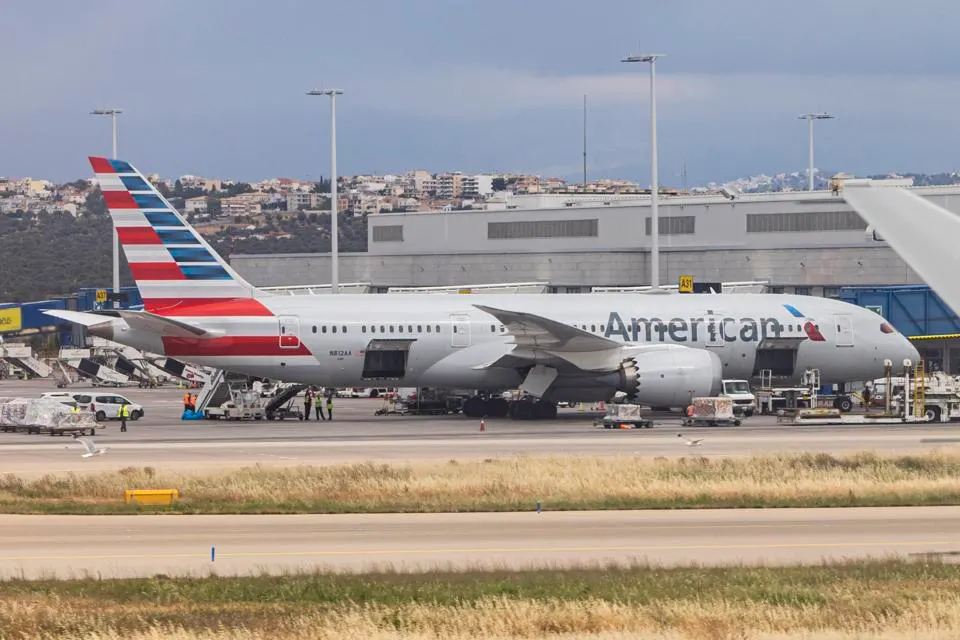In a move that reflects both resilience and realism, American Airlines has restored its profit outlook for 2025, even as it lowers its earnings target. The announcement has caught the attention of investors and industry analysts alike. While the adjustment in the projected earnings may suggest cautious management, it also signals the airline’s renewed focus on cost control and operational efficiency amid a challenging travel environment.
This development comes at a critical time for the airline industry, which is still grappling with high fuel prices, staffing shortages, inflation, and uncertain demand patterns. American Airlines’ new financial forecast serves as a barometer for broader industry trends, and it offers valuable insights into how legacy carriers are navigating the post-pandemic landscape.
A Balancing Act: Lower Targets but Stronger Confidence
American Airlines revised its full-year profit expectations recently, lowering its adjusted earnings per share (EPS) guidance. While this might appear as a negative signal at first glance, the airline simultaneously emphasized improvements in operational reliability and cost management—two key elements that could support a more stable and profitable business model moving forward.
According to the company’s latest update, adjusted EPS for 2025 is now expected to range between $1.00 and $1.15, down from the previously anticipated $1.25 to $1.50. This revised guidance considers several dynamic factors, including softer domestic demand, elevated operational expenses, and fleet delivery delays that have impacted capacity plans.
Why Lower the Target Now?
There are several reasons behind the lowered profit target:
- Operational Challenges
- Rising fuel costs and unpredictable supply chains have driven up operating expenses.
- Aircraft delivery delays from Boeing and Airbus have limited American Airlines’ ability to increase capacity as planned.
- Domestic Market Softness
- While international travel has rebounded significantly, domestic demand—especially for business travel—remains somewhat stagnant.
- A shift in consumer behavior, with more travelers booking closer to departure, has made revenue forecasting more complex.
- Competitive Pressure
- Low-cost carriers continue to pressure pricing, especially on high-traffic domestic routes.
- Promotions and discounts to retain market share have affected revenue per available seat mile (RASM).
Despite these factors, American Airlines remains optimistic about maintaining profitability for the year—a sentiment not universally shared across the industry.
CEO’s Perspective: Realism Over Hype
American Airlines CEO Robert Isom provided further insight during the quarterly earnings call. “Our revised outlook reflects current realities,” he said. “But make no mistake—we are confident in our strategy and our ability to deliver consistent profitability in the long term.”
He added that American Airlines is prioritizing operational stability, enhancing its customer experience, and investing in digital transformation to reduce costs over time. “We’re not chasing short-term gains. We’re building a durable business model,” Isom said.
Investors React: Mixed But Encouraged
The market reaction to the updated forecast has been cautiously optimistic. Shares of American Airlines dipped slightly after the earnings call but rebounded as investors processed the full picture.
Key Takeaways for Investors:
- The restoration of profit guidance shows the airline remains fundamentally sound.
- Cost management and capacity control are being taken seriously.
- The lowered EPS target is seen more as a recalibration than a red flag.
“Investors appreciate transparency,” said Jonathan Keyes, an aviation analyst at Morningstar. “By acknowledging challenges while still projecting a profit, American Airlines is showing a mature and responsible approach.”
Comparison With Industry Peers
American Airlines is not alone in adjusting its outlook. Other major carriers like United Airlines and Delta have also recalibrated earnings forecasts in light of volatile macroeconomic conditions.
However, American’s approach differs in tone and timing. While Delta raised its guidance earlier this year based on robust international travel, American has taken a more measured approach, likely due to its greater exposure to domestic and short-haul routes, where competition and price sensitivity are higher.
American vs Delta: A Snapshot
| Metric | American Airlines | Delta Air Lines |
|---|---|---|
| Adjusted EPS Outlook (2025) | $1.00–$1.15 | $1.70–$1.90 |
| Focus Area | Domestic + Transatlantic | Premium + Global Routes |
| Fleet Issues | Boeing 737 MAX delays | Minimal impact |
What This Means for Travelers
For the average passenger, the profit outlook may seem irrelevant. But in reality, it affects:
- Flight schedules: Expect fewer new routes and more focus on existing profitable ones.
- Ticket prices: Pricing could remain steady or increase slightly, especially on international routes.
- Customer experience: Investment in digital tools, self-service kiosks, and on-time performance may become priorities.
American Airlines has already begun rolling out improvements such as faster baggage handling, enhanced loyalty rewards for frequent flyers, and upgraded lounges in key hubs.
Focus on Operational Efficiency
A big part of American’s renewed strategy is cutting non-essential costs and improving efficiency. Several initiatives have been implemented to support this effort:
- Fuel hedging and route optimization to manage costs better.
- Automated systems in check-in and boarding to reduce labor strain.
- Staff training programs to ensure better customer service and reduce delays.
These moves are expected to help the airline save millions of dollars annually, providing room for long-term investments.

Fleet and Future Plans
One of the biggest bottlenecks American Airlines faces is related to aircraft deliveries. The airline has several pending orders, especially for Boeing 737 MAX jets, which are critical for domestic and short-haul routes.
The delay in delivery affects capacity planning, forcing American to fly older aircraft longer or adjust its schedule. However, the airline is working closely with manufacturers and expects most of the backlog to be resolved by the second half of 2026.
In the meantime, American Airlines has opted to refurbish existing aircraft, extend maintenance schedules, and optimize fuel burn to maximize efficiency.
Labor Relations: A Stabilizing Force
In contrast to previous years of labor unrest and negotiation deadlocks, 2025 has seen relatively stable labor relations. New contracts with pilots and cabin crew have helped restore morale and ensure fewer disruptions.
Key labor developments:
- A new 5-year deal with the Allied Pilots Association.
- Increased wages for ground staff and maintenance teams.
- Introduction of mental wellness and family support programs for employees.
These measures, although increasing costs in the short term, are seen as essential for maintaining smooth operations and avoiding strikes.
Looking Ahead: Is American Airlines Ready for 2026 and Beyond?
Despite the lower profit target, American Airlines is betting on a more consistent and resilient business model moving forward. Analysts believe the airline could emerge stronger if it continues to prioritize:
- Smart growth over aggressive expansion.
- Reliability over speed.
- Long-term planning over quarterly performance.
The restoration of the profit outlook, albeit at a reduced level, shows that American Airlines is focused on stability, sustainability, and trust-building—both with customers and shareholders.
Conclusion: A Strategic Reset, Not a Retreat
The fact that American Airlines restores profit outlook in a time of uncertainty shows confidence in its business fundamentals. By lowering its profit targets slightly but doubling down on operational excellence, American Airlines is making a calculated bet that slow and steady will win the race.
This is not just about navigating a tough year—it’s about preparing for a future where airlines must be leaner, smarter, and more adaptable. And if the current strategy holds, American Airlines may very well be on the right path.
Read Next – Reckitt Benckiser Shares Jump After Core Unit Beat, Guidance Upgrade






